January 1, 2023
by Indie Gamer Chick
2023 marks the 40th Anniversary of Dragon’s Lair, a pioneer of “more fun to watch than play” gaming. I was born in 1989, and while Dragon’s Lair II: Time Warp technically counts as “my lifetime” really, two-year-old me wasn’t playing anything besides peek-a-boo by that point. Fast forward to the 2000s, when we ended up owning Dragon’s Lair on DVD. “Have I got a game for you!” Dad said to teenage me. He threw it in and handed me the remote control (which was NOT a very good controller) and it was just about the worst thing I’d ever experienced in my life. Even Dad admitted that playing it with a DVD remote control was not the smartest idea. We tried it on a game console but it kept clicking-through to the DVD control menu. Fast forward to Christmas morning, 2010, and waiting for me under the Christmas tree, again from Dad, is Dragon’s Lair Trilogy for the Wii. The look on his face was so precious, a look that continued later in the day when I threw the disc in and proceeded to get totally demolished by the games.
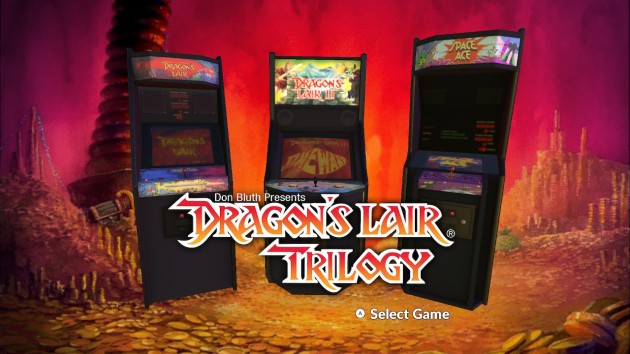
Dragon’s Lair, Space Ace, and Dragon’s Lair II: Time Warp are games that never stood a chance against the test of time. They’re famous for three things: being beautiful to look at, being difficult, and barely qualifying as video games. They served as little more than novelties, or “attractions” for arcades. Well, Dragon’s Lair did. In my eleven years on social media, I have never once heard a single person trade a tale of Space Ace in arcades. Not once. On the other hand, I had one reader describe Dragon’s Lair’s reign as king of arcades like a bright, beautiful shooting star. Look away for a moment and you risk missing it completely, but if you saw it, you’ll never forget it. No game that has aged as badly is remembered so fondly by the generation that experienced it in-person in arcades. Sadly, it’s a phenomena I’ll never be able to fully understand no matter how hard I try. When Dragon’s Lair 3D: Return to the Lair released in 2002, to 13-year-old me, it was just another game, and not even a good one. The excitement of actually playing Dragon’s Lair was lost on me and my generation. A “you had to be there” we can’t understand.
Or, maybe not? The only way I can know for sure is to put these games through the wringer.
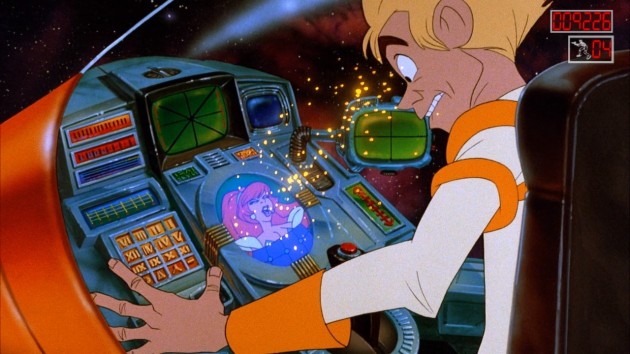
This is pretty much how my reviewing appears to developers.
Dragon’s Lair Trilogy retails for $19.99 on PlayStation, Nintendo Switch, and Xbox, with each individual game being sold separately on platforms like Steam for $9.99. Since that’s the sold-separately price, we’ll round it up and say a quality game in this set is worth $10 in value. I’ll round up the $19.99 price and say Dragon’s Lair Trilogy must get $20 in value to win my Seal of Approval. But, before I figure up the value of the games, I need to look at the slate of extra features in the set. Oh, before that, I have to mention the menus of Space Ace. Take a look at this screenshot from when you pause the game.
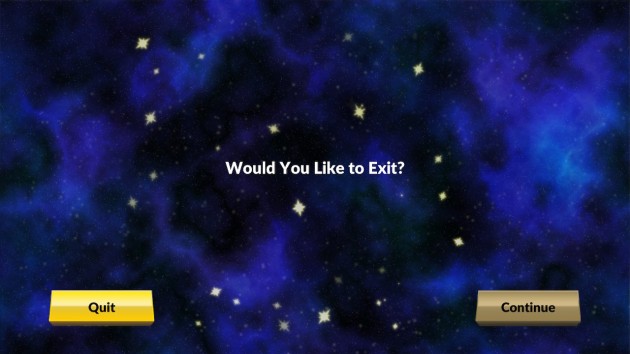
What option do you think is highlighted here? Believe it or not, “Continue” is the highlighted option, while nothing is highlighting the bright “quit” option that stands out a lot more in this screen. This is such a obviously bad choice that I’m convinced it’s an accident. That they MEANT for the brightened option to be the highlighted one, but whoever designed the menu accidentally crossed their 1s with their 0s and got it backwards. By the way, in every menu option where there is only two choices, this problem is there. Why not have an arrow? You know, that time-honored symbol you use to point at something and say THIS ONE! The other menus aren’t that much better. For Dragon’s Lair, is purple THIS ONE, or is it red? You would know from the front menu of the game since there’s more than two options to choose from and only one is a different color. But, if you weren’t paying that close of attention when you started the game, you wouldn’t know. Combined with the distinct lack of options for one of the extra features that I’ll get to and you can tell they just didn’t really care all much about presentation. I would have looked past it and just called this lazy, but then I keep going back to the gold/faded gold highlighting decision. I’ve been playing games my entire life and that’s the absolute worst menu select choice I’ve ever seen. I’m fining Dragon’s Lair Trilogy $5 in value for this. From here out, this will be the standard Definitive Review fine for bad menu design in classic game collections.
EMULATION EXTRAS
This slideshow requires JavaScript.
Dragon’s Lair Trilogy provides a few options for playing the games, though the one I wanted most is notably absent. You can choose three or five lives for each game. It really sucks that there’s no option for unlimited lives and a modern-style death counter for these games. There is every possibility that such an option might have made the difference between winning and losing. The lives system only makes sense if this is trying to suck money from players in $0.50 intervals. These days, the fun is in seeing how many times you croak before reaching the ending. It’s been years since this released, but if Digital Leisure wanted to attempt to appeal to modern gamers (and why wouldn’t they? We spend money too!), you don’t have to lower the difficulty. You just have to, you know, make it fun to die.
This slideshow requires JavaScript.
There’s also adjustable difficulty for the first Dragon’s Lair and Space Ace and a cabinet mode for all three games that I didn’t like one bit. Having played a lot of retro collections, there’s something about how this set handled scan lines on a TV screen that I found unconvincing. Dragon’s Lair allows you to play either the “Arcade” or “Home” versions. In the arcade version, you move to another screen if you die, whereas in the home version you have to repeat the stage until you complete it. Also included is a “Director’s Cut” option to play Dragon’s Lair II that changes the second-to-last level, making it shorter and nowhere near as memorable. I’ll talk about that more in the review of that game.
This slideshow requires JavaScript.
The most important addition is the “move guide” that you can optionally add to the bottom of every game. This is not the same as the flashing-light indicators the games originally utilized to guide your actions. It’s a directional overlay that tells you the exact button press, and you simply have to be quick on the draw. The cabinet mode also has lights that tell you which direction to press located around the joystick. Unless you have the games memorized, you basically have to play with either the move guide or the cabinet mode turned-on. Especially the first Dragon’s Lair and Space Ace. Take, for example, the very first scene in the entire game. Dirk falls through the rotten wood on the drawbridge and a monster pops out of the moat. You’re supposed to swing your sword at it, but the sword doesn’t flash yellow. You’re just supposed to know to use your sword, I guess. In fact, both Dragon’s Lair and Space Ace don’t always use the yellow indicators for both the action and the movement, and sometimes you just plain have to make an educated guess. By time Time Warp came around, they had included it with every move, but even with it, I found I couldn’t make progress at all without the move guide.
This slideshow requires JavaScript.
Of course, the downside is, they cover up the animation, which is the whole point of playing these. Instead of watching the whole screen, you’ll inevitably stare at the bottom of the screen waiting for the next prompt. I suppose you can think of this as a trainer to memorize which moves you do on what screen, but that’s assuming you actually want to get THAT good at forty-year-old games. Either way, the move guide is a welcome inclusion, but I’m not at all satisfied with the lack of options. Given how you can watch each scene bit by bit in the media extras, why not let people play and practice them? Why not have the option for a death-counter instead of lives? I would hope a modern re-release of a Dragon’s Lair collection (which would hopefully solve licensing issues and include more games) would do more in the future. As for this specific set, for all the emulation extras, I’m crediting no extra value to Dragon’s Lair Trilogy. If they gave you the option to replace the lives system with a death counter, I would award $5 in credit towards the set, and $2.50 for being able to practice individual scenes.
MEDIA EXTRAS
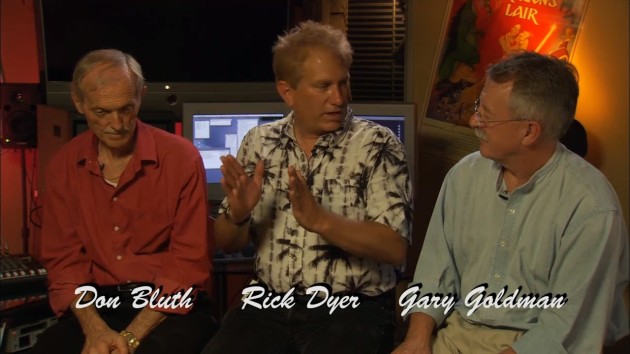
“The fish was about this big..” “That’s not how a big fish story is supposed to go, Rick!”
Dragon’s Lair Trilogy comes with a couple media extras, the highlight of which is an interview with Don Bluth, Gary Goldman, and Rick Dyer. It runs a little over twenty minutes and, if you’re a fan of this stuff like I am, it’ll leave you wanting a lot more. Not because this lacks the good stuff, but because the interview is so well done. Dyer especially comes across as a cool guy. The type of guy you want to see succeed. A mad scientist who, more or less, invented the FMV format as we think of it today. For better and for worse, I suppose. The problem with this interview is that there’s no option to rewind or fast forward. There’s volume issues, and if you mishear something, you have to restart the whole video and watch it again. That really sucks and I have to cut what I would reward this feature by half as a result. I wish it had been broken into separate segments. It makes no sense why they didn’t, especially since the actual feature does have title cards for each different part of the interview.
This slideshow requires JavaScript.
Dragon’s Lair Trilogy’s only other notable extra is a deleted scene for Dragon Lair II: Time Warp. It runs under a minute and is a partially voiced storyboard for a level set on a pirate ship, complete with what parts would flash yellow to indicate an action. The scene looks like it would have been dull. What’s frustrating is that the original Dragon’s Lair had many deleted scenes, including a full new “room” where one-eyed gargoyles hurl spears at Dirk. The scene is shown in the interview above, but you can’t watch it separately. Even more disheartening is the scene was apparently completed and colored by Digital Leisure, presumably with the intent of making it playable, but it’s nowhere to be found outside the interview. A quick glance at YouTube also makes it appear that there were multiple unused death animations that never made the game. It sure would have been swell to have all those. Space Ace gets no deleted scenes.
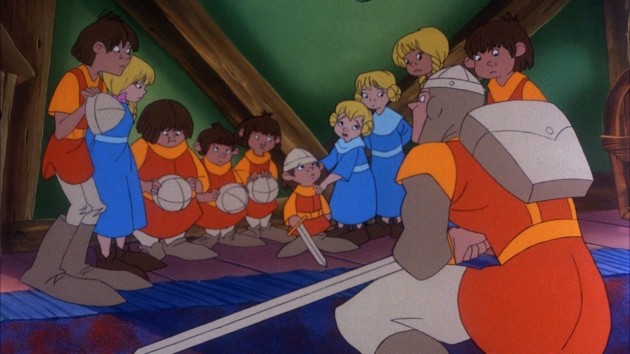
Dirk the Daring: the one hero in gaming who has irrefutable proof that he actually scootilypooped with the damsel he rescued. Of course, this leads into one of the great mysteries of video games: how the hell did Princess Daphne squirt out ten kids in what looks like a span of ten years and still maintain her figure? Clearly she messes around with the dark arts, which would explain why the forces of evil are always trying to kidnap her. They want to know her secret!
In fact, Space Ace feels pretty unloved by this set overall. Right before I finished this feature, I found out that a conversion kit for Dragon’s Lair II: Time Warp was created in 1991 that could turn it into a more difficult version of Space Ace that used diagonal moves. This is not included in this set. Space Ace’s only two “special features” are also included for the other two games: the attract screen and the ability to watch the full game without having to play it. That last one is the best feature, and it really says it all about this set, doesn’t it? That the best part about Dragon’s Lair Trilogy is the ability to just watch it without playing it.

They never mentioned which drugs produced the concept for Dragon’s Lair II.
Also, they got the three main guys behind the trilogy together to do a really good interview. Why stop there? DO AN AUDIO COMMENTARY!! Like, duh, right! Angela, future Spielberg of her generation, has helped me to rediscover the greatness of a well done feature film audio commentary. Dragon’s Lair and Space Ace especially could have benefited from hearing how game designer Dyer and animation expert Bluth came together to make one of the most famous games of all time. At one point in the interview, they touch upon how Bluth would interpret Dyer’s storyboards and create animation that didn’t work from a video game perspective (suddenly I have a hunch what went wrong with Dragon’s Lair II). Which scenes? In which ways? We don’t find out, and an audio commentary could have corrected this. Maybe we’ll get one eventually. Anyway, for all the media extras, I’m crediting $2.50 in value to Dragon’s Lair Trilogy. Had they offered more flexibility with how to watch the interview, I’d of called it $5.
THE ULTIMATE VERDICT ON THE COLLECTION
For those not familiar with my way of thinking of how retro games should be reviewed, I take NO historical context into account. I don’t care how important a game was to the industry, because that doesn’t make a game worth playing today. The test of time is the cruelest test of all, but every video game must face it. I might not be here if not for Space Invaders’ success, but I wouldn’t want to play it today. Not when there’s better options. Therefore, when I review retro games, every game gets either a YES! or a NO!
YES! means the game is still fun and has actual gameplay value when played today and is worth seeking out.
NO! means the game didn’t age gracefully enough to merit playing today and is not worth seeking out, and certainly not worth spending money on.
For Dragon’s Lair Trilogy, the final score was as follows:
YES!: 1 ($10 in Value)
NO!: 2
$2.50 in Extra Value
$5.00 in Fines
TARGET VALUE: $20
TOTAL VALUE: $7.50

Dragon’s Lair Trilogy does not earn my Seal of Approval. With only one game worth playing today, and a game that you can buy separately on a few platforms, it’s not worth buying the whole set. Frankly, I’m still stunned that I could give any game in Dragon’s Lair Trilogy a YES! at all. I had previously planned to have “I HATE FMV GAMES” etched on my tombstone. But really, there’s no reason to own all three games, one of which isn’t THAT bad but not good enough and one of which is one of the worst coin-ops ever made. I suppose you can still feel free to grab this set REALLY cheap. Like, under $10 cheap. Even then, I’m sure you can get Dragon’s Lair by itself even cheaper.
GAME REVIEWS
 Dragon’s Lair
Dragon’s Lair
Released June 19, 1983
Designed by Rick Dyer
Directed by Don Bluth

One of the problems with adapting Dragon’s Lair today, in the 2020s, is people would have a cow about a character like Princess Daphne. As if friendly but vapid airheads don’t exist anymore. Or perhaps they wouldn’t if not for portrayals in media, like this? I think that’s the argument. Frankly, I don’t care. Besides, Dirk himself is completely brain dead too. They are gaming’s most fit couple.
Man, did I ever get it wrong about Dragon’s Lair. I got fixated on the whole “it’s really just playing Simon Says with animated cues” aspect. Which, by the way, is still there. As far as elephants in the room go, this is an especially large one that’ll always be around, like a photo-bombing woolly mammoth. But, when you really stop and look at the set pieces and the timing and themes of Dragon’s Lair, you realize that, more than any FMV game ever made, Dragon’s Lair succeeds at creating the illusion of video game-like interactivity. Not only that, but it does so in a way that is practically clairvoyant. That read the tea leaves flawlessly on where video games would go eventually. It’s ironic that the sequel is called Time Warp, when really, it was the original game that saw the future. The type of boss fights and challenges in games that didn’t exist in 1983 but do now. Come to think of it, many were probably inspired by this!
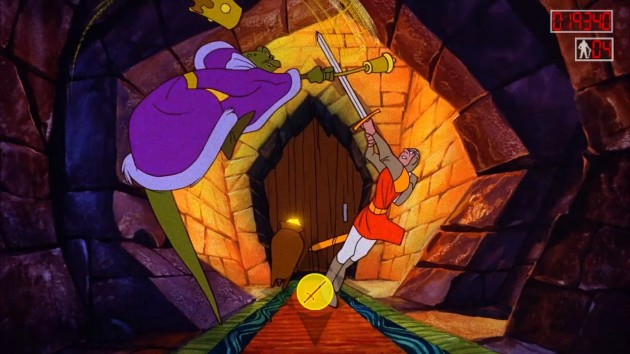
I think one of the aspects that makes Dragon’s Lair stand out is literally every single character is memorable. It’s such a shame that nobody has managed to make a truly great game based on this franchise in the forty years since the original. All the pieces are certainly in place.
You can’t talk about any of these games without talking about the Don Bluth animation. Before we start, I want to qualify myself: I am NOT an expert at animation. I just watch a lot of it. People talk about Dragon’s Lair like it’s right up there with The Secret of NIMH or An American Tail or The Land Before Time. But, it’s actually not that high of quality. It’s somewhere between a really expensive Saturday morning cartoon and a feature film. Whenever a corner could be cut, chances are it probably was. There’s a lot of reused animation throughout the game. People, including myself, overlook that, but when you’re paying attention, they stand out. Space Ace is worse about it, but it’s there throughout Dragon’s Lair. On the other hand, I love the use of color and I think the backgrounds are just beautiful. I think they went a long ways towards making Dragon’s Lair work. It feels like an adventure because it looks like one.
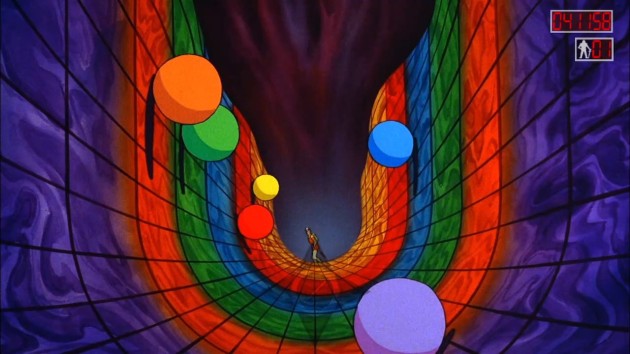
The later Dragon’s Lair 3D tried to recreate set pieces like this to various success. Had Dragon’s Lair 3D featured the smooth controls and lightning-fast responsiveness of a game like Prince of Persia: Sands of Time, for all we know, it might have gone down as one of the all-time greats. But, Dragon’s Lair 3D had sluggish controls, a problematic camera, and this RIDICULOUS recoil whenever you ran into a wall or object. AND YET, it still managed to be just a little bit alright, but nothing special. For a game with that many problems to still step across the “alright” threshold makes me wonder what if? about it. What if it had good play control and didn’t have that absolutely stupid recoil? Would it have been an unprecedented hit and reignited the franchise? We’ll never know, I suppose. I’m sure eventually they’ll re-release it, but I hope they don’t in its present state. Dragon’s Lair 3D turned twenty-years-old in November, and gaming has come a long ways. Scrap it and go again with modern technology and maybe, at long last, Dragon’s Lair will be the franchise it deserves to be.
Having said all that, I think the understated part of what makes Dragon’s Lair work, besides the beautiful use of color and the striking backgrounds, is that every room creates the illusion of an interactive video game. The last third of Space Ace and pretty-much all of Dragon’s Lair II come across like watching a movie that someone shoehorned button prompts into. That happens in Dragon’s Lair too, but it’s most rare in this game. The rooms are designed like video game challenges. Swinging left to right (or right to left if the room is mirrored) across flaming ropes. Dodging giant, rolling balls that are set to a pattern. You’re always acutely aware you’re not really controlling Dirk the Daring, but Dyer and Bluth did everything in their power to suspend your disbelief anyway. They even manage to succeed in some rooms, where the framing and directional options are unambiguous: the challenge is right, so move left. The beast is coming at you, so use your sword. It takes proper staging to pull off, but sometimes they did, and suddenly, Dragon’s Lair ain’t too bad a game at all.
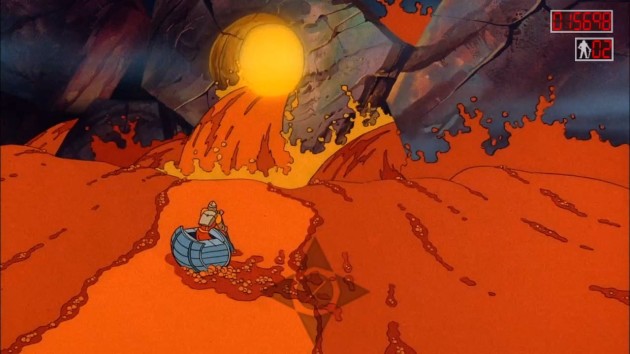
The rafting sequence is one such area. The timing of when to press the prompts and the various hazards that take place during this sequence just plain work as a magic trick that makes you feel like you’re in control of an already animated cartoon. I love using the magic trick analogy with Dragon’s Lair, because you never forget what you’re doing isn’t real. It’s not immersive at all. Instead, it becomes okay to allow yourself to play along anyway. That’s what makes stage magic fun, and Dragon’s Lair is basically stage magic as a video game. We know the score, but we’ll pretend we don’t, because we want to have fun.
Dragon’s Lair has more moments like that than any FMV game I’ve ever played. But, that doesn’t always mean the results work. Some of the rooms don’t do enough visual cues to make it predictable what the move will be. Moments where, logically you would think you’re going to press one direction, but really, you’re supposed to press another. Take this moment:
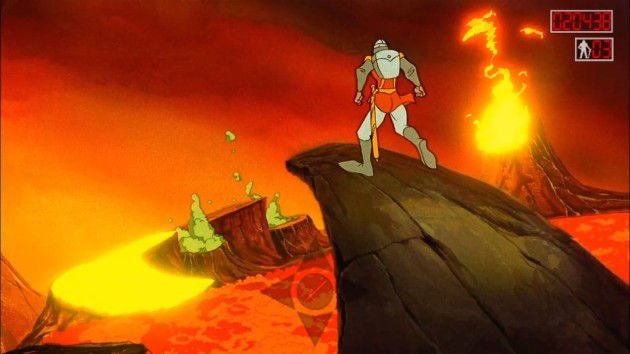
Assuming you weren’t using the move guide, which tells exactly when to press a button and what to press, what way would you press in the above screen shot? The flashing thing is to the left of you, but also in front of you. Hell, in theory, it’s also lower than you, would could imply you have to jump downward towards it, right? Well, the correct answer is you’re supposed to press UP. Even though the flashing target is in the lower left hand of the screen. I can’t imagine how many quarters a person would have needed in 1983 to commit this to memory. One reoccurring story I keep hearing from people is gathering around to watch someone in an arcade who could run through the entire game effortlessly. I’d not had the patience to get that far at all. I did make a good faith effort to play without the guide, but I couldn’t figure out what moves to do, and frankly I didn’t have any fun trying to figure it out.
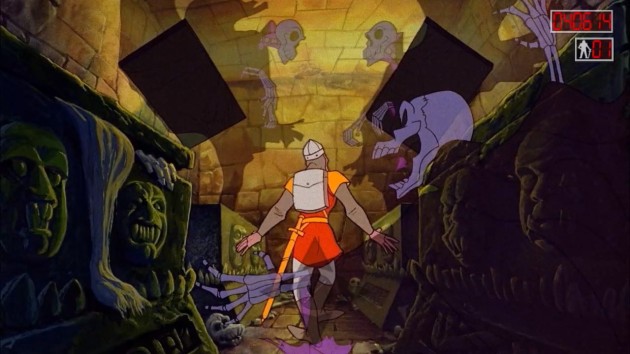
In some areas, there’s no way to anticipate what move could possibly be the next move. You have to wait for a cue, or just watch the guide. Well, at least with Dragon’s Lair, I found I could do both.
Oddly, Dragon’s Lair is the only game in the trilogy where you can play with the guide on and still watch the cartoon too. It’s not a visually complex story. There’s not a lot of screen clutter. You don’t have dozens of moving objects, or even if you do, they’re staged correctly to not distract from the point of PLAYING the game. It’s a “clean” presentation that remembered what it’s asking of players: enjoy the show, but also do things based on what the show does. That’s why Dragon’s Lair succeeds even forty years later while Space Ace and especially Dragon’s Lair II: Time Warp crash and burn. It IS an interactive movie, like few attempts at such a thing have been able to pull off. Even with the guide, you won’t miss anything with Dragon’s Lair. It’s something I didn’t appreciate until I played the other two games. How I tested this is I replayed each game a third time in three days and had my father and sister quiz me on details of the games. NOTHING unfair, and they understood what I was aiming for and went for details anyone playing the game should notice. For Dragon’s Lair, I answered six out of seven questions correct. For Dragon’s Lair II, it was two out of seven. For Space Ace, it was only one out of seven, with the one that I got right being from early in the game.
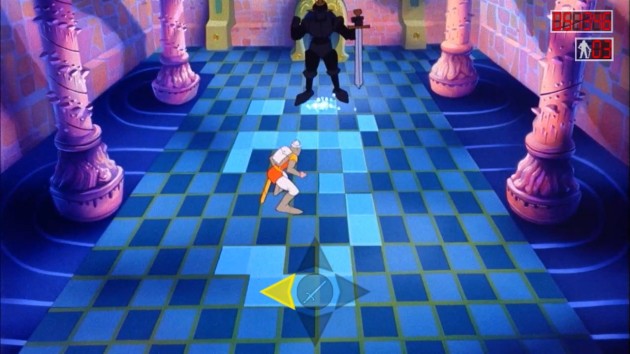
This memorable scene is an example of “this would be so cool if you could actually play it!” that certainly was NOT cool to play when you really could in Dragon’s Lair 3D. And actually, the scene is a little overrated in the arcade game. The patterns the knight taps out on the floor don’t always seem to make logical sense in terms of which button you’re expected to press.
Let me be clear: Dragon’s Lair isn’t a great game by any stretch. Besides the occasional “why would you press that direction at that moment?” issues, the game also makes you eventually repeat each room, only with the animation mirrored so every left/right move is reversed. Of course, if they didn’t do this, a game of Dragon’s Lair would only take about six minutes to complete. The biggest knock I have is against the historically terrible finale sequence. The rooms are all relatively short, which serve as logical checkpoints if you lose a life. In fact, I consider the smallness of the rooms to be a highlight of the game. It makes it feel like a real castle you’re exploring.
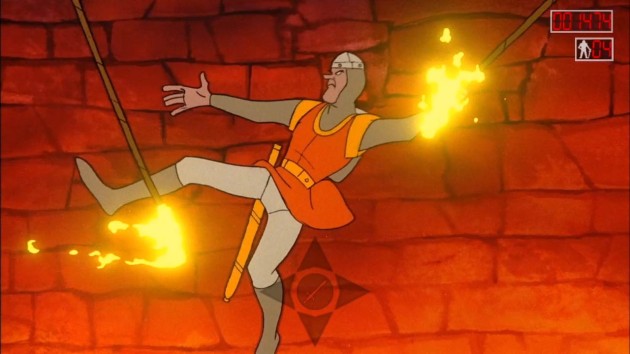
That’s probably the most underrated aspect of what makes Dragon’s Lair work: some rooms can be as short as one action. None of that minute-and-thirty-second short film that you have to replay over and over crap from the sequel.
Except for the final room with Singe the Dragon, which has no checkpoints, and the game grinds to halt and becomes agony. First, Singe nearly wakes from his sleep, which takes a while of just waiting around and doing nothing. AND THEN, FOR NO REASON, Princess Daphne very slowly explains that you need to retrieve a magic sword that’s in the room and use it to get the key around Singe’s neck. And she’s doing stripper poses the entire spiel. Mind you, this explanation was totally unnecessary. If it was a new and unique gameplay method, FINE, but it wasn’t, so what the hell were they thinking? You’re not doing anything different than you were doing leading up to this. You’re still just pressing buttons based on prompts. If you die.. and you probably will since the timing of this room can be brutal.. you have to watch this whole sequence again, from Singe’s nearly waking up to Daphne’s striptease-instructional video. No means to skip it. It’s torturous to sit through even once since a game about constant acton-reaction now suddenly has you just standing around waiting for the game part to start again. AND YOU HAVE TO REWATCH IT EVERY TIME YOU DIE! I get they probably wanted this room to feel climatic, but when you’re playing a game called DRAGON’S Lair and you slay a dragon and rescue the girl, that ought to be climatic enough. It’s one of the worst finales to a game I’ve ever seen. It ain’t a deal breaker, but it almost was. I had to think about it.

I actually didn’t kill Singe here. He died of old age after hearing the unskippable dialog for the three-dozenth time.
Okay, so Dragon’s Lair didn’t exactly stick the landing in its final act. But, everything up to that point is a lot better than I’ve ever given it credit for. It’s not fantastic or anything, but I enjoyed my time with it. Just think, all it took was basically creating the perfect FMV game to get me to finally say YES! to one of these things. And yet, I still wasn’t sure why the generation before me holds this up so fondly. Why they still get starry-eyed as they share tales of epic failure and sessions that lasted under a minute, or gathering around to watch that one weirdo who blew his life savings memorizing every sequence. Despite its relatively short window of fame, brutal difficulty, and all the truly-awful games in the franchise that followed, Dragon’s Lair is still is a game you want to enjoy. Why is that? I have to believe it’s for more than just the Don Bluth animation, or the hilarious yelps and squeals of Dirk the Daring, or what is just alright gameplay that is ultimately probably the best the format is capable of. So, I again asked myself: what could have possibly made those memories of Dragon’s Lair echo so loudly across the decades?
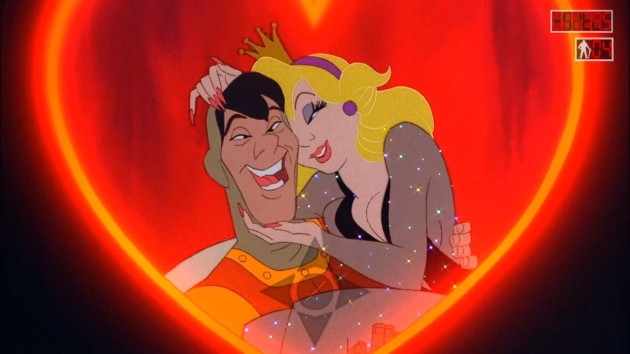
These two would go on to have ten kids.
I think I have the answer. Because the set pieces and art and characters all came together to make what players in 1983 wanted games to be like, but they weren’t. Not yet. Although it wasn’t their intention, Dragon’s Lair feels like a promise to gamers: this is where the medium is going. One day, games will look and sound this good and have action this exciting, only it will be you in control. Well, we all know what happened over the next forty years. Dragon’s Lair survives through history because it represents the promise of gaming kept.
Verdict: YES! **FLIP**
 Dragon’s Lair II: Time Warp
Dragon’s Lair II: Time Warp
Released June 16, 1991
Designed by Rick Dyer
Directed by Don Bluth
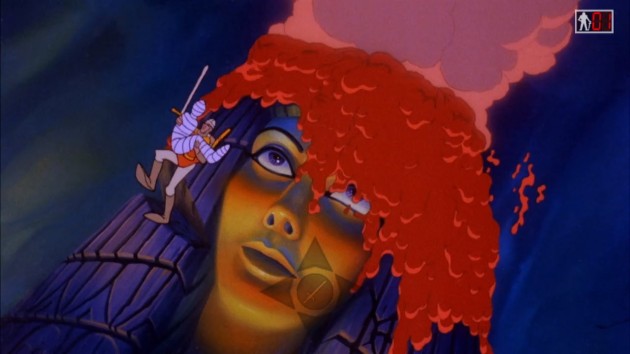
Pictured: Cathy’s brain melting from peeling back all the layers of awfulness from Dragon’s Lair II: Time Warp.
If I was too hard on Dragon’s Lair before, I wasn’t hard enough on Dragon’s Lair II: Time Warp. Talk about losing the plot! This sequel forgot literally everything that made the original game (and some of Space Ace) work. Dragon’s Lair, for all of its FMV-based flaws, still does everything in its power to look like a video game adventure. Time Warp doesn’t at all. It’s a series of disconnected animated vignettes that completely fails in every imaginable way. In the annals of bad games, it’s astonishing that nobody ever brings this one up. Perhaps because it’s an FMV game and that’s too low of a low-hanging fruit. Perhaps because the Don Bluth animation is so beautiful and vibrant. Perhaps because the nine segments of the game are so memorably bonkers that you wonder if the game was co-written by cocaine. But, actually playing Dragon’s Lair II, it’s shocking how many different ways a simple FMV sequel to the FMV game of the Golden Age could be so bad. How it could get it so wrong?
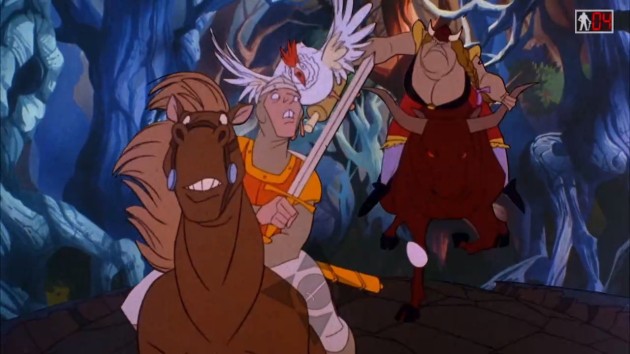
Time Warp starts off with Dirk’s mother-in-law trying to murder the man who rescued her daughter in the first place and is likely the only person capable of rescuing her again. In terms of intelligence, the apple fell about two inches from the tree on that one.
The most obvious problem with Dragon’s Lair II: Time Warp is that this really doesn’t make any effort at all to feel like a video game. In Dragon’s Lair, the game randomized all but the first and last levels of the game. It worked there because they were all short and they all flowed seamlessly into each-other. Time Warp’s nine levels are longer, linear, and with the exception of the first level, have no checkpoints at all. They’re also all, more or less, self-contained animated shorts that don’t fit-in with each-other. The moments where it feels like they were trying to animate some form of a video game trope in order to invoke the expectations of what a game should be like are few and far between. In Dragon’s Lair or Space Ace, whether you were swinging across ropes, timing when to move between spikes, leaping across platforms, or fighting monsters, the designers created the illusion that you were controlling Dirk and Dexter (well, until they forgot to do that in Space Ace too). Time Warp feels like a totally disconnected animated short that someone surgically grafted button prompts onto.
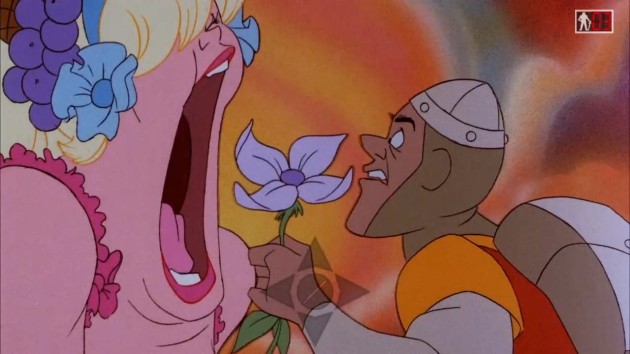
This is Eve. As in Adam & Eve. As in the Garden of Eden, which is the fourth stage of the game. Whereas Dragon’s Lair felt like an actual video game where a knight searches a castle looking for a damsel in distress, Time Warp feels like a series of two-minute-long Silly Symphony clips that someone attached a video game to long after the fact. Which isn’t far off from the truth. The Alice in Wonderland sequence for Dragon’s Lair II debuted on television in 1984 and the game was apparently fully completed between 1984 and 1986. It never came out until 1991 thanks to the bankruptcy of Cinematronics.
They must have realized how poorly flowing this would work as a video game, so in Time Warp, every single move does the yellow flashing prompt. You’d think that would make this the most playable game, but often the actions are too brief and the visuals so loud that you might need a couple lives to see them. Of course, every time you die on a stage, even if it’s the very last move on that level before you finish it, you have to start all the way over at the beginning. These aren’t teeny tiny rooms, like in Dragon’s Lair. These levels last over a minute of basically non-stop quick-time events where one mistake means you have to start over from the beginning. What’s especially annoying is they seem to have animated each level with moments that were clearly meant to be checkpoints. In the first level, you go from being chased by your mother-in-law into entering the castle from the original game, and if you die after the dungeon, you restart from there. Makes sense! Well, even though there’s a moment like that in each of the animated segments that follows, like a turning point in the action, it’s not utilized and you have to start over if you die.
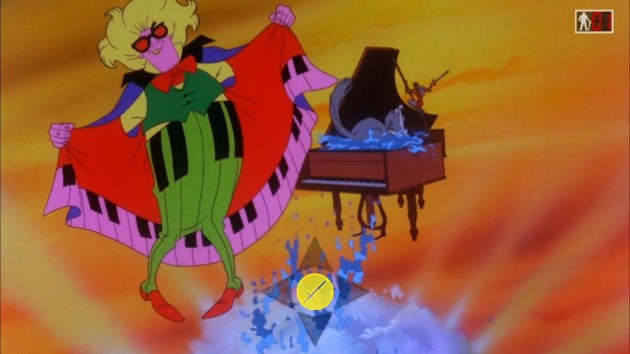
Dragon’s Lair has lots of beautiful art, but it also remembers that players are focused on the game itself. All the stuff happening on the screen is done in service to the gameplay. Dragon’s Lair II is filled with sight-gags and small details that you will die if you watch, because you’re not focusing on the next button prompt. I’m sure this was done in service to the days where people would gather around and watch someone play the game, but it’s a game that constantly forgets it’s game.
It stinks of game has no interest in giving players value. Instead, Dragon’s Lair II is completely focused on trying to squeeze as many quarters as possible. But, if you thought the lack of checkpoints was greedy, you ain’t seen nothing yet. Dragon’s Lair II: Time Warp gates players out of the final two levels unless they find all eleven magical items that are hidden throughout the first seven stages. It’s a sleazy move that made me feel unclean as I played it. Imagine playing through this in an arcade in 1991 and being interested in it enough that you spend enough money to GIT GUD and make it past the Ancient Egyptian level (ironically the only level in the entire game that feels remotely like the first game), and then suddenly the game just restarts from the beginning because you didn’t gather all items. In a game where you have a single second to make a decision, and ten times it will flash in two directions at once because one of the choices has the item, and you have to choose correctly, going ten for eleven, or else you.. keep going but actually will now have to replay the whole game from scratch eventually too. What a load of crap. Also, yes, ten times. For the playing card in stage three, they didn’t bother to animate the indicator that it’s one of the items you must get. Even worse: because of the Alice in Wonderland theme of that level, you wouldn’t even think that it’s THE item. It’s just right there and blended seamlessly with the rest of the design. Actually, some of the items that do flash do so in very visually-loud sections. The butterfly in the Beethoven stage is practically invisible!
This slideshow requires JavaScript.
I should also note that the arcade game had a scoring system that was removed completely from the home version. I didn’t even know that until I started researching whether the arcade game actually told players anywhere that they HAD to get the treasures to finish the game. It does.. at the bottom of a three-second long instruction screen that is briefly seen during the extended attract mode that runs on an over one-minute long cycle. It’s shamefully greedy on the same level that Ghosts ‘n Goblins forced full-replay was. Even worse: logically the way to not screw players is to make them only replay the levels where they missed an item, right? Well, Dragon Lair II has contempt for its players, so you have to replay the whole game from the start. Wow. Leland Corporation’s bankruptcy was well-deserved after pulling crap like that, and good riddance.
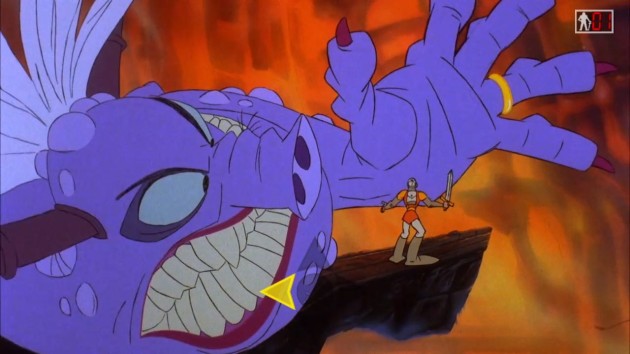
The best scene in the entire game is the eighth level, where Mordroc actually gets the Death Ring on Princess Daphne, who turns into Ganon if Ganon were a drag queen. BUT, if you play the Director’s Cut, this never happens. It starts exactly the same, with Mordroc clearly putting the Death Ring on Daphne and Dirk throwing his sword through his arm. Then, the scene changes from the original, and suddenly Daphne is out of the shot and the Death Ring isn’t on her. In a shorter, more plodding and less fun scene, you dodge Mordroc’s attacks before knocking the ring onto his finger. The one good call this game made was going with the Monster Daphne sequence. Too bad everything leading up to it was an unprecedented disaster.
So, that’s Dragon’s Lair II: Time Warp. I have nothing positive to say about it as a game. Dragon’s Lair wanted you to feel like you were in control of Dirk. Dragon’s Lair II feels like it wants you to appreciate the amazing art of Don Bluth while it shakes you down for quarters. We can do that without this button prompt stuff or the schoolyard bully robbing you of your lunch money routine this game pulls. The on-screen action feels completely disconnected from the controller. The item collecting system and lack of checkpoints practically makes Dragon’s Lair II a mugging. It’s astonishing to me that the same people who crapped all over the Sega CD’s Mighty Morphin Power Rangers game for having absolutely nothing to do with the on-screen prompts rewarded Dragon’s Lair II with raving reviews when it did the exact same thing. If you want to know whether a game critic is shallow or not, see if they did a review of Dragon’s Lair II, and if they did, see how much they focused on the incredible art work and not on how it factors into video game logic. Because this is BAD. As in I literally can’t believe nobody brought this stuff up in 1991. Dragon’s Lair II: Time Warp should be listed among the worst arcade games ever made. Sure is pretty, though.
Verdict: NO!
 Space Ace
Space Ace
Released December 21, 1983
Designed by Rick Dyer
Directed by Don Bluth
This slideshow requires JavaScript.
I spent the last three days going back and forth on whether Space Ace would get a YES! or a NO! On one hand, I think it’s the most beautiful game in the trilogy, with a fun theme, an awesome concept, and a white-knuckle pace. On the other hand, like Dragon’s Lair II, it forgets it’s a video game and not an animated short about two-thirds of the way through it. It’s also the most frustrating from a technical point of view, as with-or-without the move guide, the timing of Space Ace in certain aspects feels like it genuinely isn’t lined-up properly with the on-screen action. This game was rushed through production, and it shows.
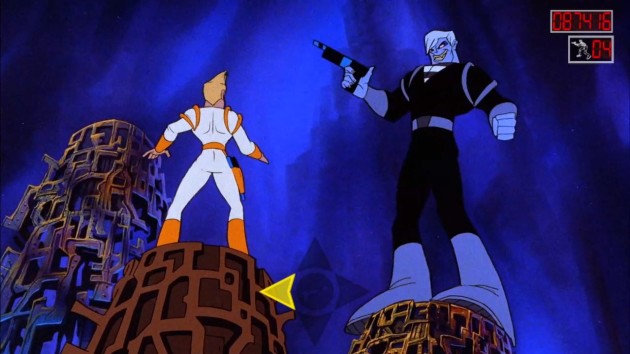
Fun Fact: Don Bluth himself provides the voice of both the villainous Borf and Dark Dexter, while animator Will Finn (who later worked for Disney during the 90s on basically every one of their good movies from that time period) provides the voice of Ace. I’ve been playing video games my entire life and, trust me, I know how bad things can be when developers grab whoever is handy, be it Sally in Accounting or John from Human Resources to do voice work. For someone who is NOT a professional voice actor by trade, Finn does a dang good job voicing Dexter. I’d genuinely never guessed this wasn’t his actual profession.
As always, the animation is jaw-dropping gorgeous, and the characters are memorable. The story and gameplay also have a tiny bit more going for them. The heroic dude-bro Dexter, aka Space Ace, is emasculated by the villainous Borf and turned into a pathetic weakling. Borf then kidnaps Kimberly and you must go on a daring adventure to rescue her. The twist is that sometimes you can “energize” and turn back into the big, buff, cocky Ace. There are times where, if you don’t do this, you die. But, most of the time, energizing branches the game into different types of sequences. There’s also a lot more “choose a random direction” moments, but since you’ll have to play out every scene anyway, there’s no point in having these. It only creates the illusion of unseen areas. It’s fine, but the problem is that Space Ace doesn’t put it all together properly and sort of ruins the whole experience in the process.
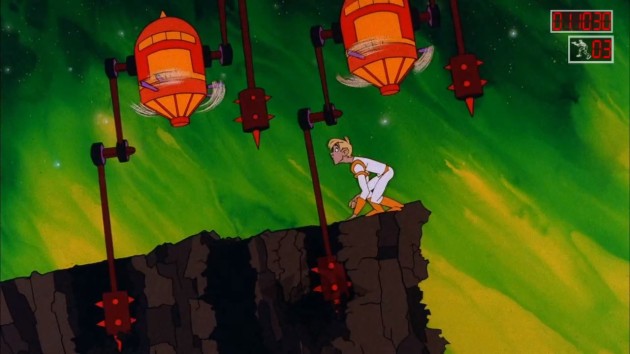
When Space Ace tries to invoke video game tropes like patterns and timing, it might actually be better than Dragon’s Lair. Take this scene in the first “level.” I mean.. look at that! That looks exactly like something you would see in a video game, right? A 2D timing challenge. If you’re going to do a fully-animated FMV video game that aspires to create the illusion that you’re actually controlling the character, yep, that’s the way to do it. But, at some point, it forgot to do these parts.
Like Dragon’s Lair, you have to repeat every major set piece and room once. But, unlike Dragon’s Lair, instead of mixing up the order, in Space Ace (at least on the highest difficulty setting), every sequence that repeats is done back-to-back. You play a room once, and then the screen goes black for a split-second and then it just repeats, only mirrored. It’s so lazy and jarring and it takes the wind right out of Space Ace’s sails. I cringed every single time it happened. Honestly, in Dragon’s Lair, I came to appreciate the mirrored levels. “Alright, I’ve done this room! What was the order?” I’d ask myself. That excitement wasn’t there for Space Ace because I literally just did this section. And, unlike Dragon’s Lair, which is set in a castle that would have many rooms, in Space Ace the narrative doesn’t lend itself at all to the repeating rooms. Not one bit. It’s Dexter running down an identical corridor, begin caught in an identical plastic bag, energizing at the exact same moment with the exact same pose.. it’s just so badly done. Not even comically bad, but just sadly bad.
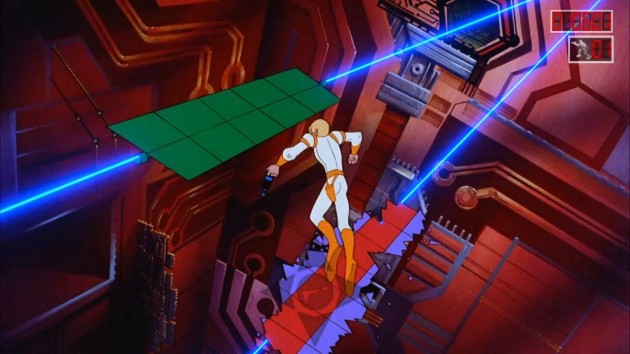
The flashing that was used in Dragon’s Lair and especially Dragon’s Lair II occasionally happens in Space Ace, but sometimes it doesn’t. Like right here, it doesn’t at all. I can’t imagine playing without the move guide, where the timing is totally guess work. In fact, I’ve heard Space Ace machines had the joysticks wear out a lot from people slamming them in the direction repeatedly. If you were wondering, here you would press LEFT.
And then you get to the areas where the on-screen action stops feeling like a video game and starts feeling like an animated short that someone just super-glued button prompts onto. This is the game I could make the least progress on without the guide. The game just plain quits helping sometimes, and guessing which direction was the correct direction, or WHEN to press the buttons for that matter, was purely luck-based. But, even when the indicator lights do flash, at some point a clear disconnect between controller actions and story narrative happens. The motorcycle sequence and the battle with Borf feel like just an ordinary cartoon that you have to press a button every couple seconds to make play. It’s no longer directed like a video game. It’s just a cartoon by that point. Which.. I guess that’s what all three of these games are, but what I mean is that it no longer feels like you’re playing Space Ace. You’re just advancing it.
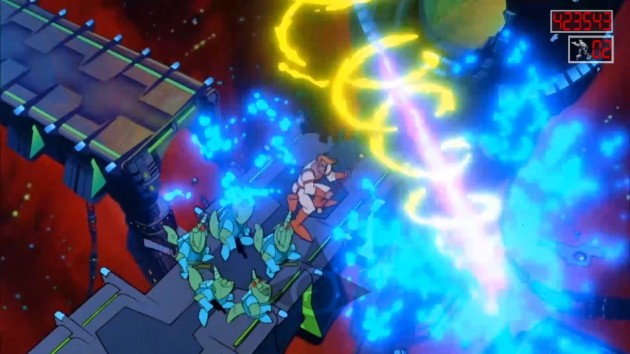
The end sequence sealed the NO! for this one. As an animated short, it’s satisfying, but as a video game, it’s a bit of a nonsensical disaster.
To Space Ace’s credit, it provided one final gaming highlight for me in 2022. I’d partially written these reviews for an abandoned article in 2021, and I needed to replay the games just to make sure I could. With my reaction time fading, it was basically now-or-never for this feature. While playing Space Ace, I game overed fairly quickly. Well, it turned out to be my only game over. To my absolute shock, I ran the table from there, losing a couple lives but still beating the game without needing another continue. What the fudge? ME? Are you kidding me? That felt really amazing. No joke. The lives I lost were of the “something about the button timing and the animation doesn’t seem to match-up at all” variety, but I didn’t mess-up after that. It felt great!
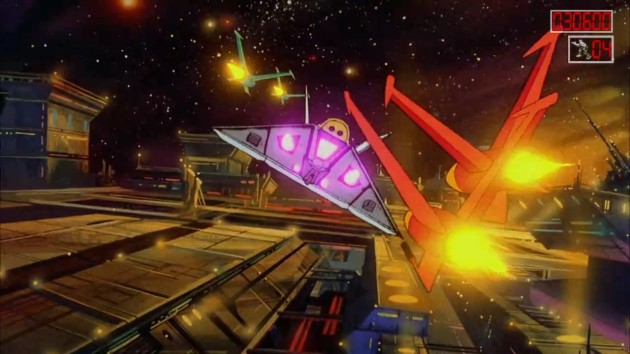
By the way, there’s both a Dragon’s Lair and Space Ace animated series by Ruby-Spears. In the Space Ace cartoon, which unlike Dragon’s Lair was done as part of the Saturday Supercade lineup, Kimberly is voiced by Nancy “Bart Simpson” Cartwright. I tried to watch these cartoons but I found them to be poison for the brain.
On the other hand, I pulled this monster final score off by not even watching the cartoon at all and instead focusing completely on the move guide. That’s what ulimately made the difference with these two games. With Dragon’s Lair, you can both enjoy the spectacle and play the game at the same time. It’s not a visually busy game. Space Ace always has a LOT going on, and if you take even a microsecond to appreciate that, you might find yourself losing a life. And now, it makes sense why nobody trades tales of Space Ace despite looking every bit as visually impressive as Dragon’s Lair. The fact that the first game proves you can get away with a visually nice animated game guided by a series of quick time events means I can’t excuse it for Space Ace. It needed to take a less-is-more approach, and it didn’t. Most telling of all: while I thought Dragon’s Lair II was more distracting, I actually scored lower on Space Ace in my quiz test. This was the game where Dyer and Booth lost their way.
Verdict: NO!
FINAL RANKINGS
How I determined the rankings is simple: I took the full list of games, then I said “I’m forced to play one game. Pick the one I could play the most and not get bored with.” That goes on top of the list. Then I repeat the question again with the remaining games over and over until the list is complete. Based on that simple criteria, here are the final rankings. Games above the Terminator Line received a YES! Games below it received a NO!
- Dragon’s Lair
**TERMINATOR LINE**
- Space Ace
- Dragon’s Lair II: Time Warp
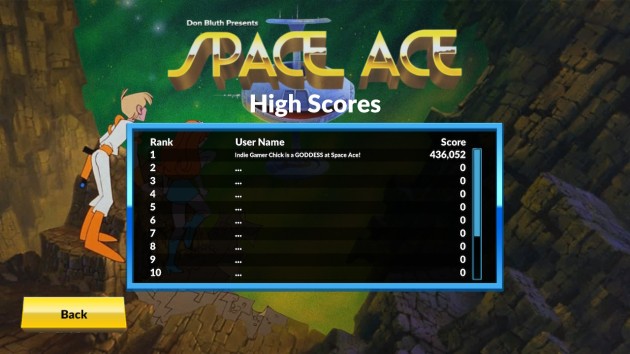
I seriously can’t believe I did that score though.
 Colored Effects
Colored Effects




 80% of the bosses being lame aside, Colored Effects is a very good puzzler. I really don’t have too many notes on the puzzle logic itself, because movement and the box shoving physics are so accurate that you don’t even stress them. There’s no pixel-perfect jumping required. I can only think of one single level where I felt the timing of activating switches and special moves at the correct moments was so precise that novice gamers might struggle with performing it even if they figure out the solution. No, this is actually nearly perfect as far as this genre goes because the movement/timing is so fine tuned that it really becomes your wits versus the puzzle design, and the controller isn’t a factor at all. And they’re really good puzzles too. You don’t have to be a brain surgeon to enjoy Colored Effects. In many ways, it’s the ideal Nintendo Switch puzzler. The toughest part of Colored Effects for me was writing this review, really. What can I say? It’s hard to write about a game that does so little wrong.
80% of the bosses being lame aside, Colored Effects is a very good puzzler. I really don’t have too many notes on the puzzle logic itself, because movement and the box shoving physics are so accurate that you don’t even stress them. There’s no pixel-perfect jumping required. I can only think of one single level where I felt the timing of activating switches and special moves at the correct moments was so precise that novice gamers might struggle with performing it even if they figure out the solution. No, this is actually nearly perfect as far as this genre goes because the movement/timing is so fine tuned that it really becomes your wits versus the puzzle design, and the controller isn’t a factor at all. And they’re really good puzzles too. You don’t have to be a brain surgeon to enjoy Colored Effects. In many ways, it’s the ideal Nintendo Switch puzzler. The toughest part of Colored Effects for me was writing this review, really. What can I say? It’s hard to write about a game that does so little wrong.






 Project Blue is Chick-Approved
Project Blue is Chick-Approved Project Blue was developed by toggleswitch, FrankenGraphics, and M-Tee
Project Blue was developed by toggleswitch, FrankenGraphics, and M-Tee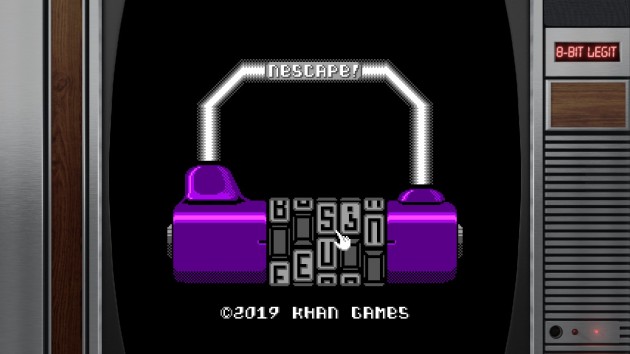
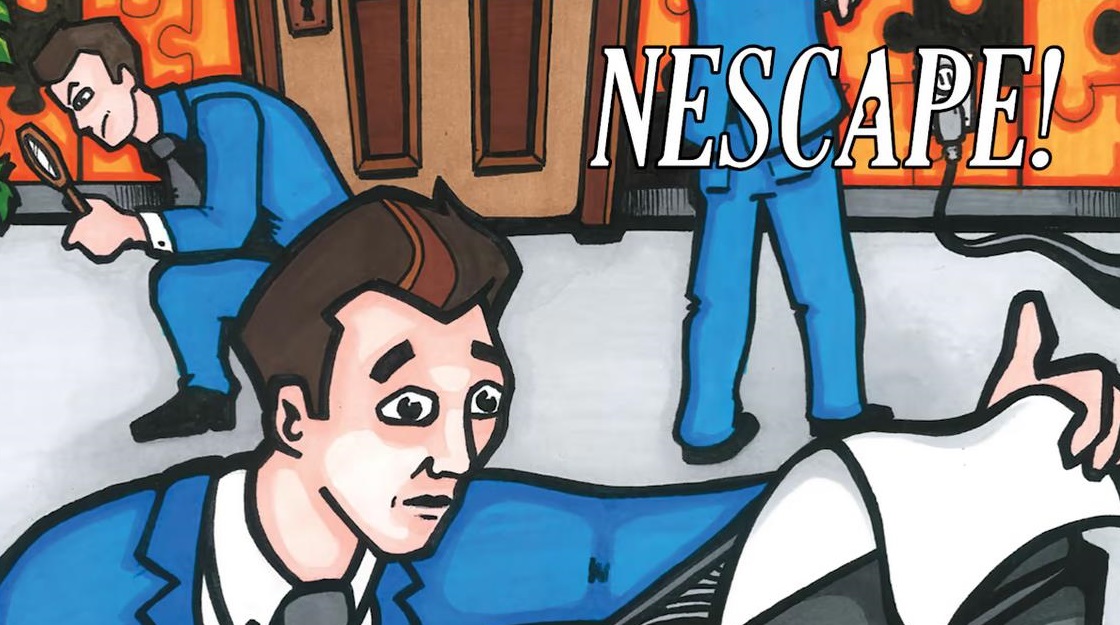
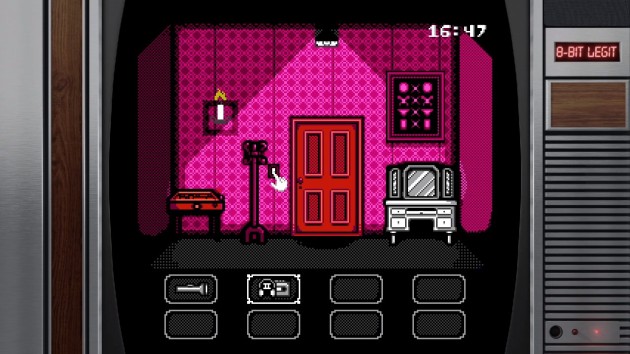

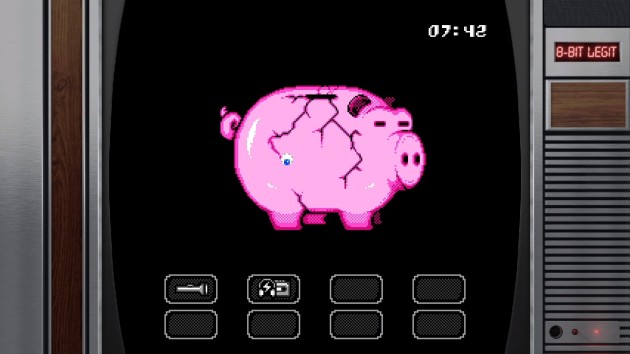

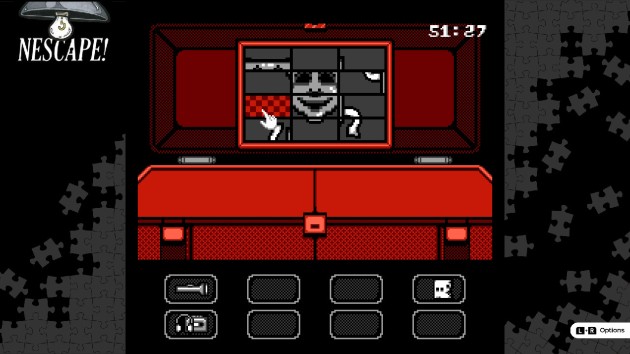
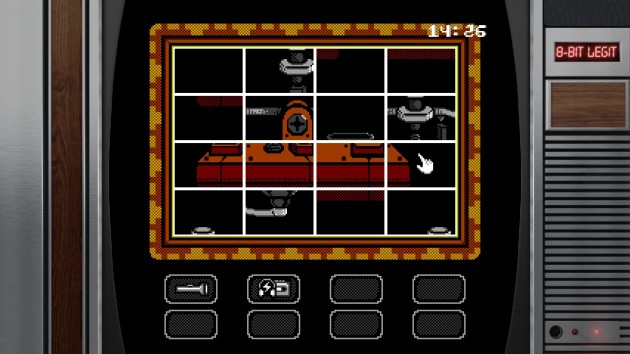
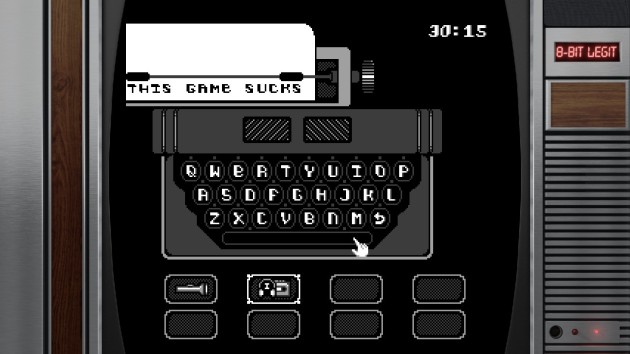
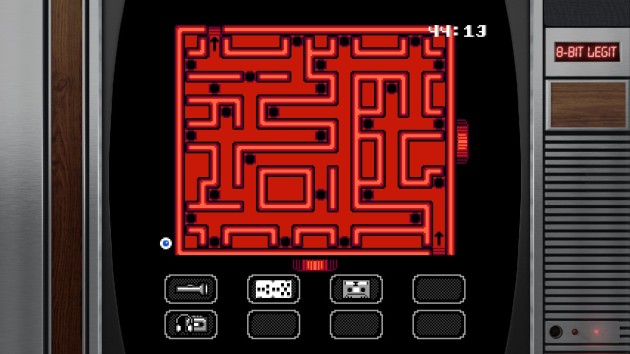
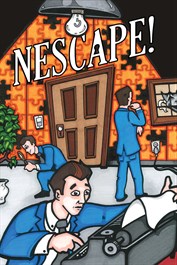 NEScape! was developed by KHAN Games
NEScape! was developed by KHAN Games
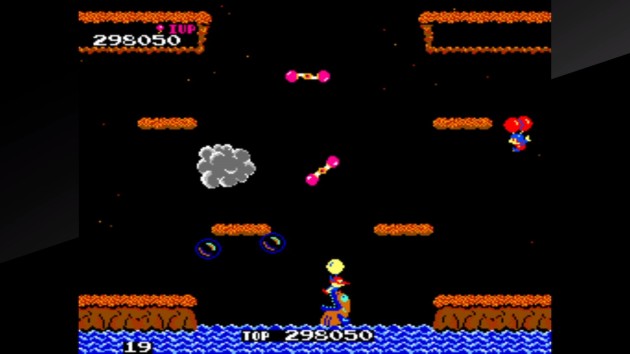
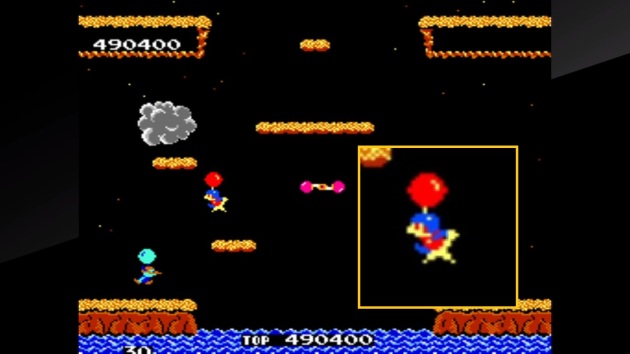
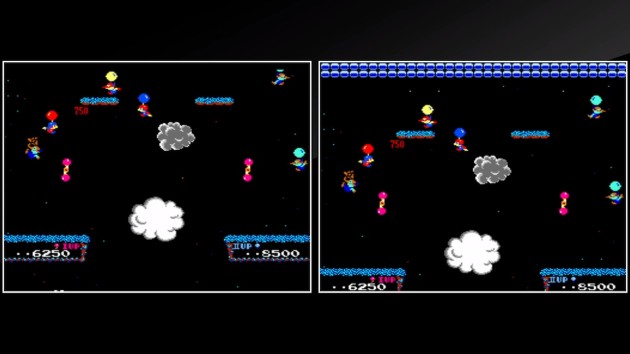
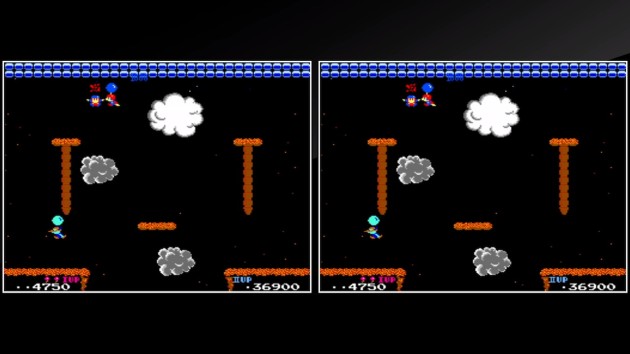
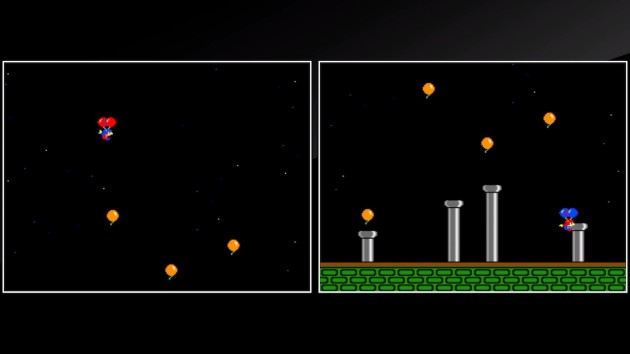
 Arcade Archives: Vs. Balloon Fight is
Arcade Archives: Vs. Balloon Fight is 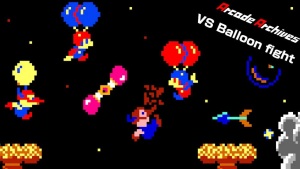 Arcade Archives: Vs. Balloon Fight was developed by Hamster
Arcade Archives: Vs. Balloon Fight was developed by Hamster






 Dragon’s Lair
Dragon’s Lair









 Dragon’s Lair II: Time Warp
Dragon’s Lair II: Time Warp




 Space Ace
Space Ace





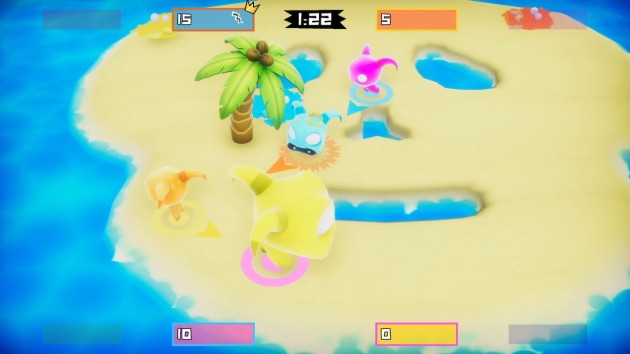
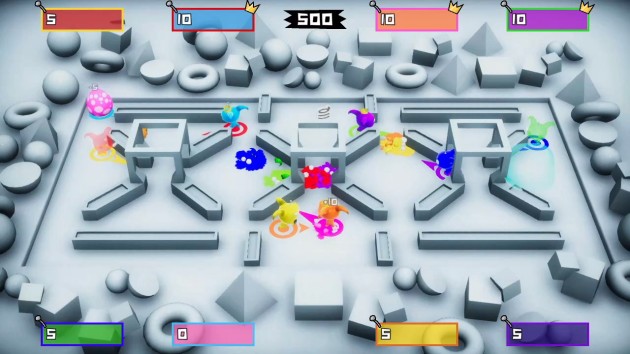
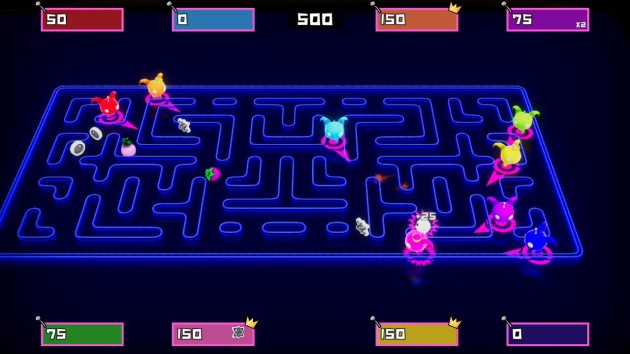
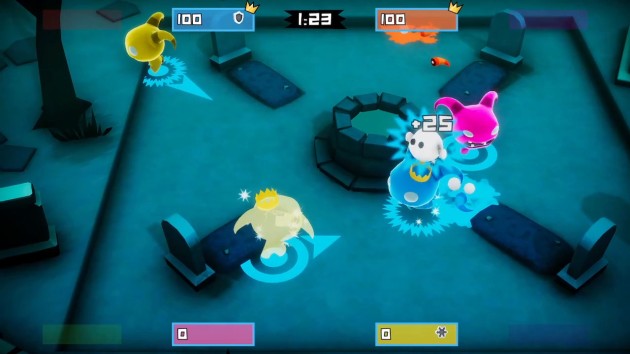
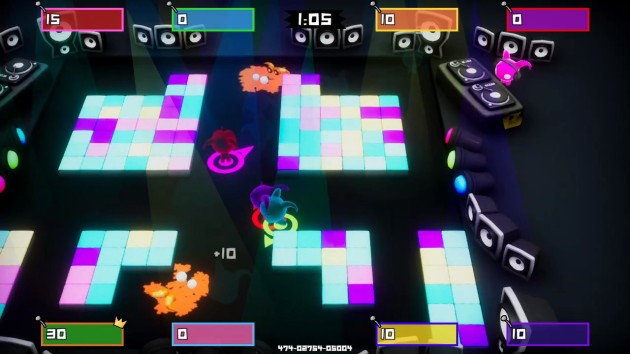
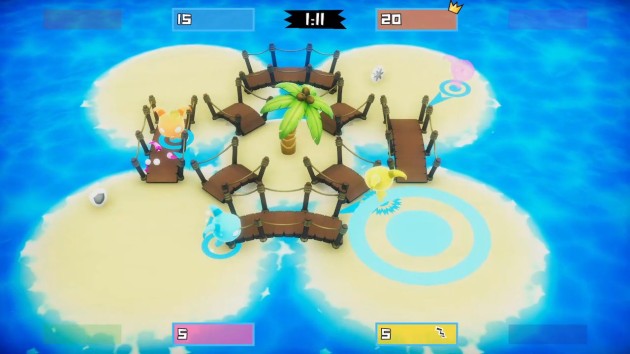
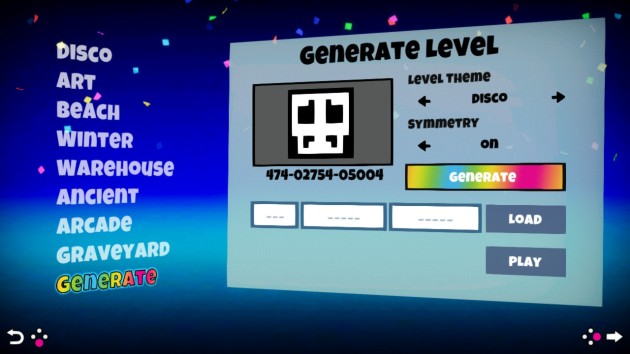
 Chompy Chomp Chomp Party is Chick-Approved
Chompy Chomp Chomp Party is Chick-Approved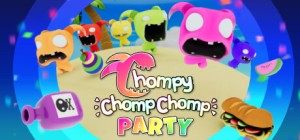 Chompy Chomp Chomp was developed by Utopian World of Sandwiches
Chompy Chomp Chomp was developed by Utopian World of Sandwiches YOU HEARTLESS BASTARDS!
YOU HEARTLESS BASTARDS!
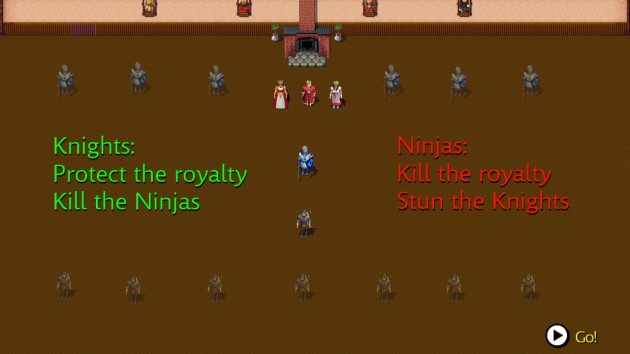
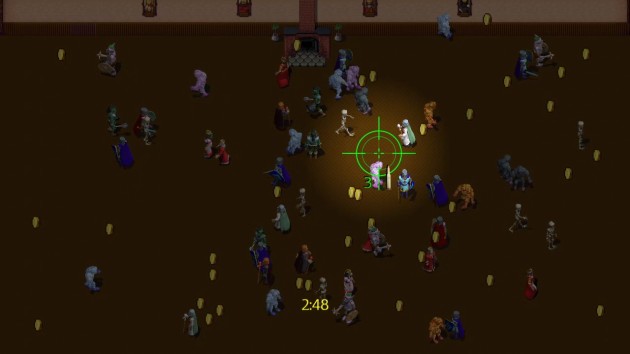
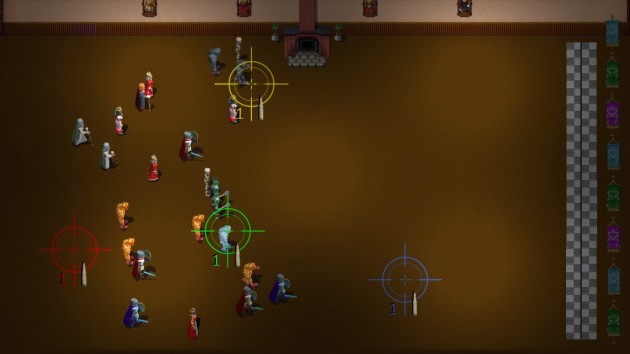
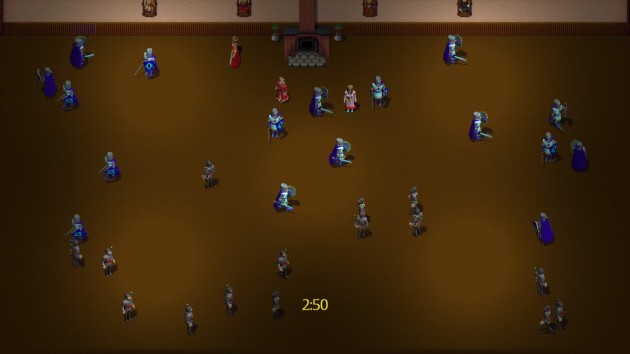
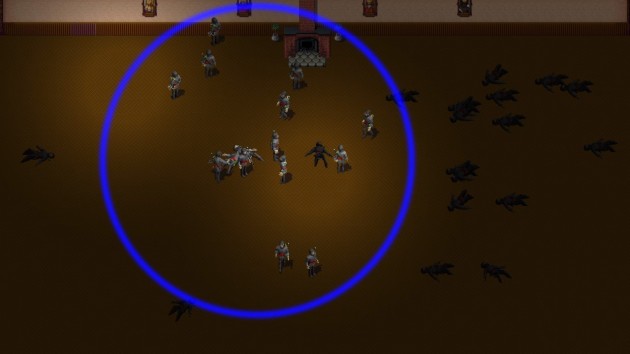
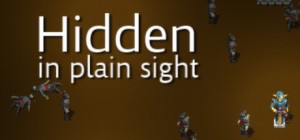 Hidden in Plain Sight was developed by Adam Spragg
Hidden in Plain Sight was developed by Adam Spragg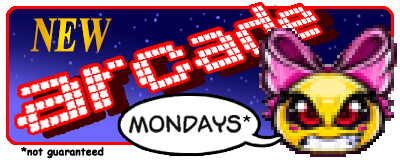
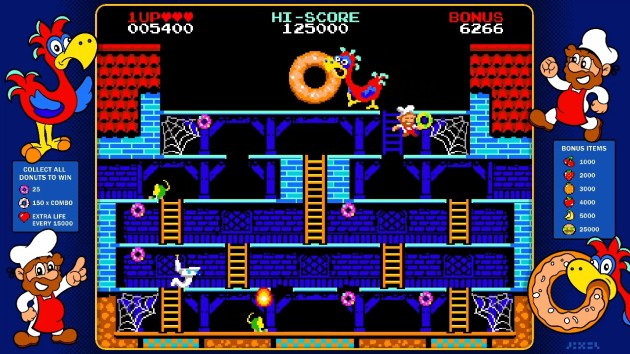
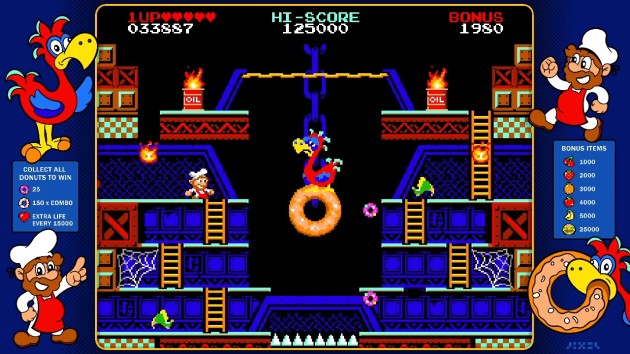
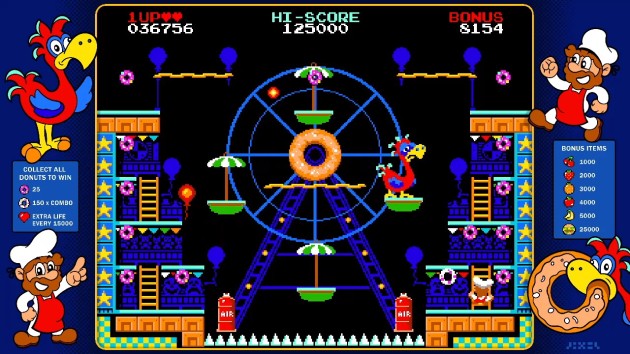
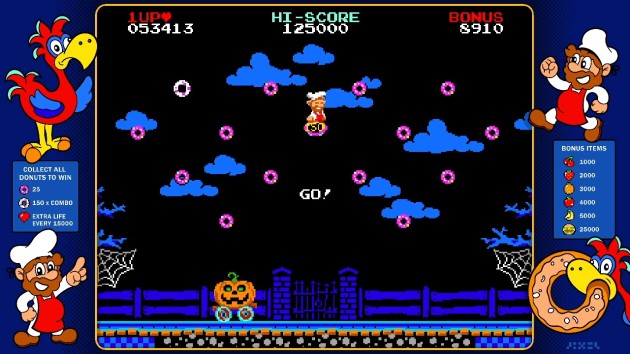
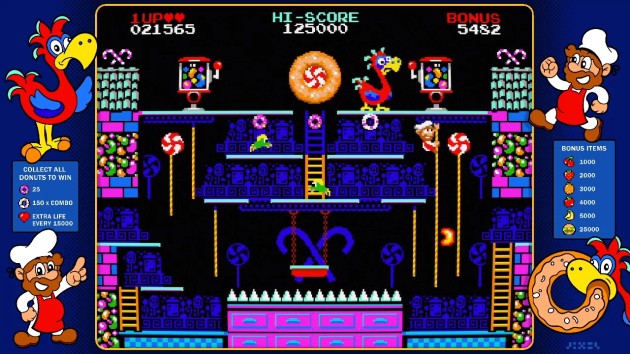
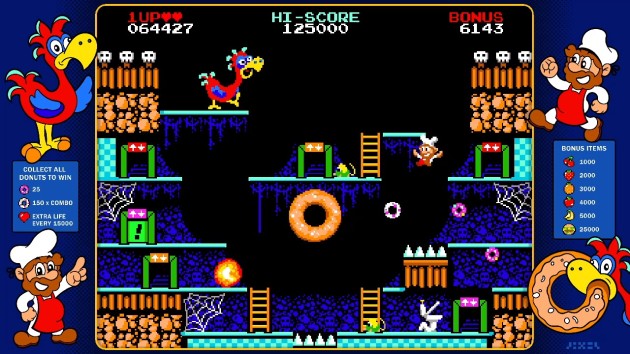
 Dodo Donut is Chick-Approved
Dodo Donut is Chick-Approved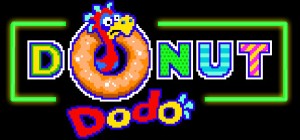 Donut Dodo was developed by Pixel Games (Published by Flynn’s Arcade)
Donut Dodo was developed by Pixel Games (Published by Flynn’s Arcade)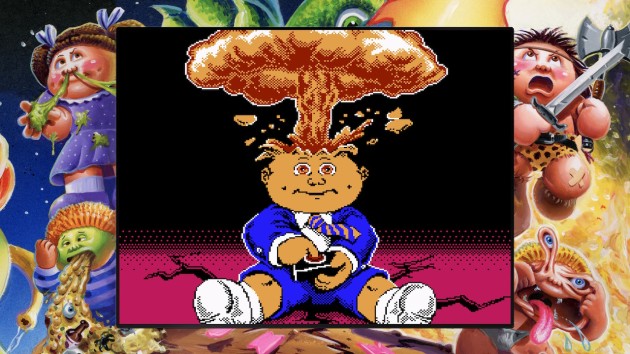
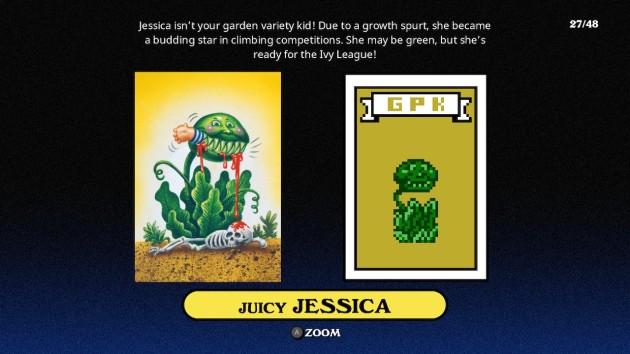
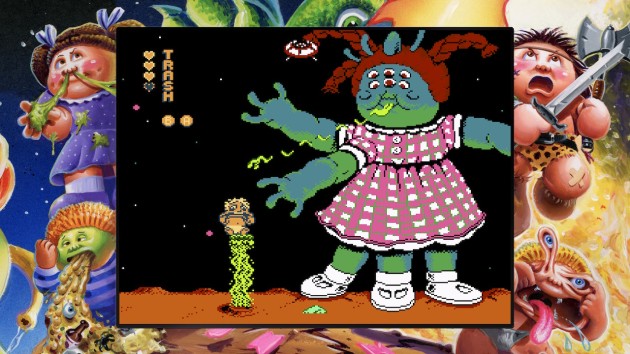
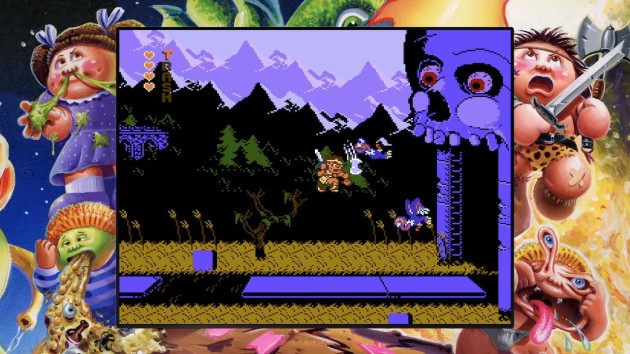
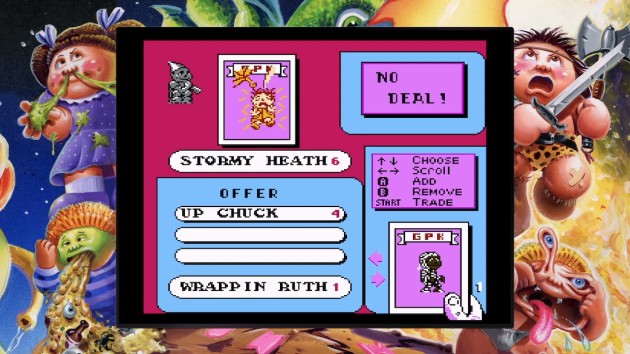
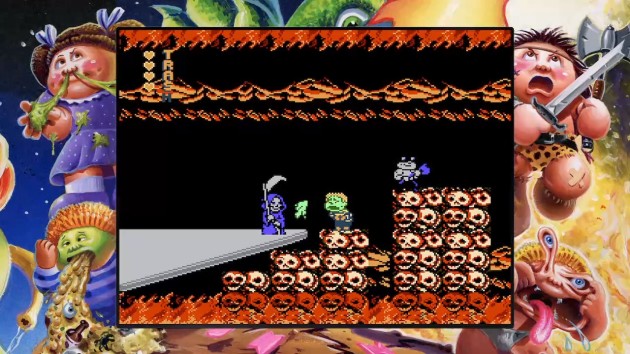
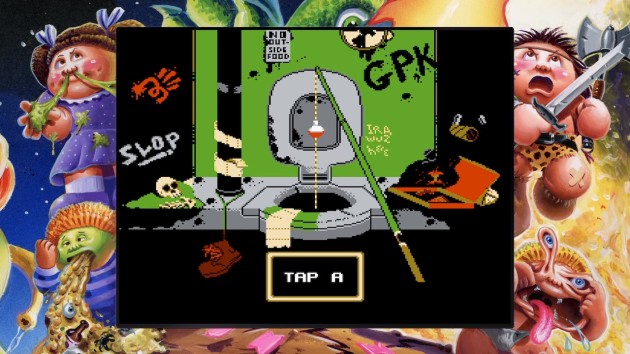
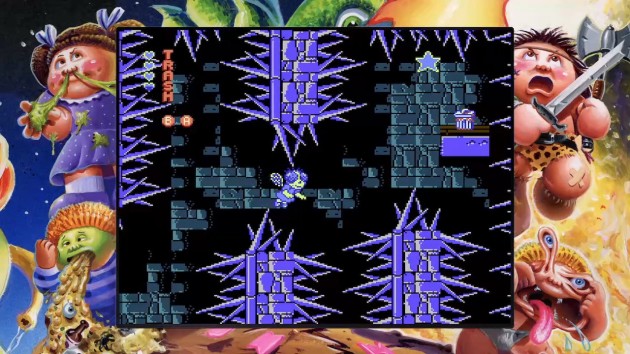
 Garbage Pail Kids: Mad Mike and the Quest for Stale Gum was developed by Retrotainment
Garbage Pail Kids: Mad Mike and the Quest for Stale Gum was developed by Retrotainment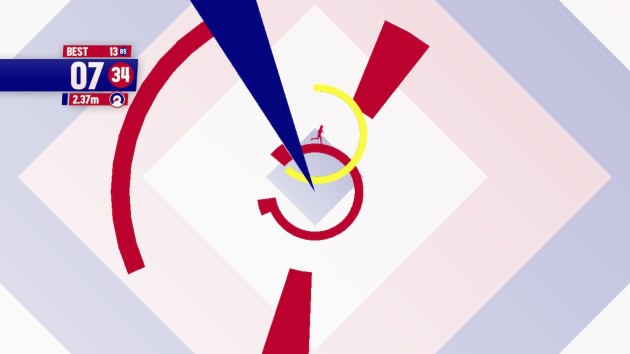


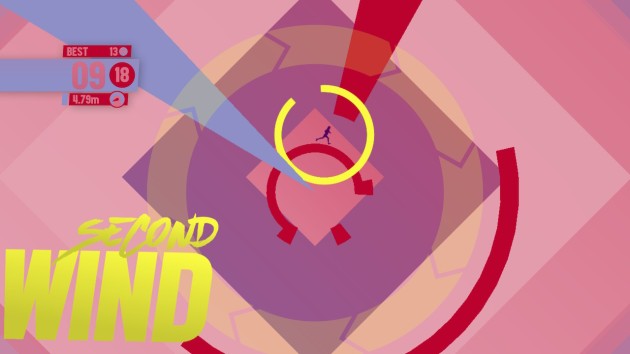
 Maddening Euphoria was developed by Chequered Ink
Maddening Euphoria was developed by Chequered Ink
You must be logged in to post a comment.